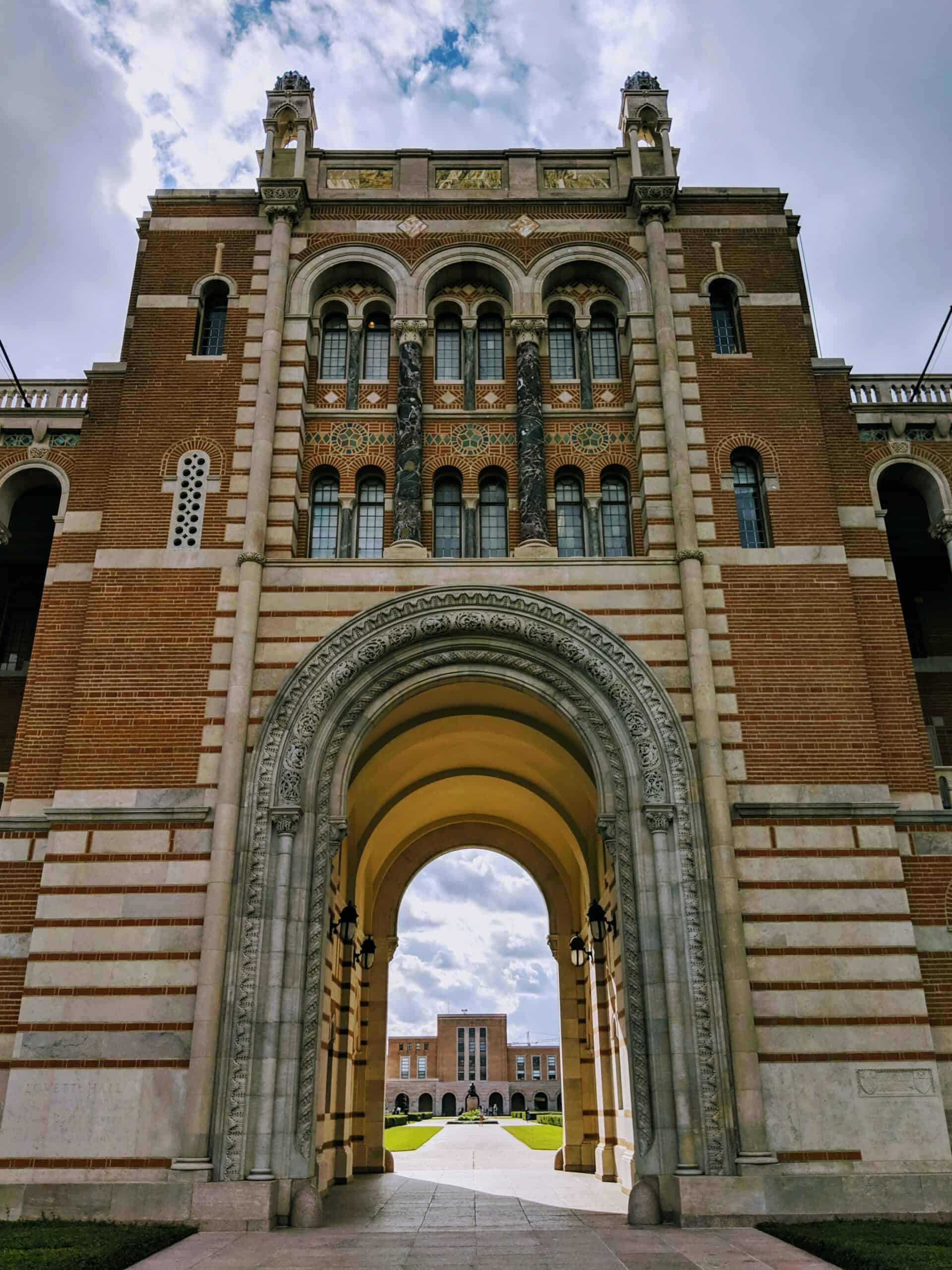
Do you know the AOA medical schools and the ones that don’t participate? Are you worried about whether your class rank or AOA status will affect your chances of matching? Does your school’s “prestige” or lack thereof make you nervous? Are you curious what residency program directors (PDs) think about AOA, the med school honor society?
In this article, we’ll look at hard data from the most recent match. We’ll address the importance of med school honors (AOA), class rank, and med school prestige/reputation.
Note: This article was updated on October 20, 2024, with the latest data from the 2024 Main Residency Match and the Program Director Survey.
Summary:
- AOA, class rank, and med school reputation matter for matching
- Their importance varies depending on a specialty’s – and likely residency program’s – competitiveness
- According to program directors: class rank > AOA > school reputation
- However, many things (e.g., USMLE scores, MSPE, letters of recommendation) matter much more
Table of Contents
AOA in Medical School: What Is It?
AOA in med school refers to “Alpha Omega Alpha,” the national medical honor society. From the AOA website:
Membership in AΩA may be attained as a medical student, resident, fellow, faculty member, alumni, clinician, or distinguished leader in medicine. Each school may elect up to 20% of the graduating class of students, up to 25 residents/fellows, up to 10 faculty, and three to five alumni, who, based on merit, demonstrate the characteristics of excellent physicians in alignment with AΩA’s mission and values.
Note that not every school has AOA, although many do. Notably, many of the most “prestigious” schools do not participate, including Harvard, Stanford, and UCSF.

AOA medical schools confer AOA membership on top students
What Are the AOA Medical Schools?
The list of schools that do not participate in AOA is not very long. As such, it’s easier to know which schools have AOA chapters by considering the non-AOA medical schools.
The schools not known to participate in AOA include:
- Harvard Medical School
- Stanford University School of Medicine
- Yale School of Medicine
- UC San Francisco School of Medicine
- UC San Diego School of Medicine
- Mayo Clinic Alix School of Medicine
- Icahn School of Medicine at Mount Sinai
- California Northstate University College of Medicine
- California University of Science and Medicine
- UC Riverside School of Medicine
- Frank H. Netter MD School of Medicine at Quinnipiac University
- Nova Southeastern University Dr. Kiran C. Patel College of Allopathic Medicine
- Carle Illinois College of Medicine
- Central Michigan University College of Medicine
- CUNY School of Medicine
- San Juan Bautista School of Medicine
Is AOA Important for the Residency Match?
You may be wondering how important AOA is for matching successfully. The AOA match data vary widely depending on the specialty. Here we graph the match rate (% of applicants who matched in a given specialty) by AOA status for each specialty in the 2024 Match.

AOA Match: AOA is most important for highly competitive specialties
AOA Match Data Show Varying Importance Depending on Specialty
In some specialties, having AOA matters much more than in others. The specialties where AOA has the largest benefit for matching include:
- Physical medicine and rehabilitation (18% higher match rate for AOA members),
- Orthopaedic surgery (18% higher match rate),
- General surgery (18% higher match rate),
- Dermatology (17% higher match rate), and
- Plastic surgery (16% higher match rate)
On the other hand, AOA membership had little benefit on the match rate for many of the less competitive specialties, including:
- Pediatrics (0%)
- Family medicine (1%)
- Child Neurology (2%)
- Emergency medicine (2%)
- Internal medicine (2%)
AOA Matters to Program Directors More Than School Prestige
One obvious caveat to the above data is that it is looking at whether someone matches vs. doesn’t match into a given specialty. The data don’t give us an idea of how well someone would match into their desired residency program, simply whether they matched at all.
So, how much does AOA matter to matching at a given residency program?
Fortunately, program directors have answered this question. Their biannual survey, recently released in 2024, addressed what factors they used to interview and rank applicants to their programs. Here are the results:
| Characteristics Considered in Deciding Whom to Interview | Percentage of Respondents Endorsing | Mean Importance Rating |
|---|---|---|
| USMLE Step 1 pass | 90% | 4.5 |
| Medical Student Performance Evaluation (MSPE/Dean's Letter) | 85% | 4.1 |
| Letters of recommendation in the specialty | 84% | 4.2 |
| USMLE Step 2 Clinical Knowledge (CK) score | 83% | 4.2 |
| Personal Statement | 81% | 4 |
| Any failed attempt in USMLE | 77% | 4.4 |
| History of having overcome significant obstacles | 74% | 4.1 |
| Perceived commitment to specialty | 72% | 4.4 |
| Diversity characteristics | 72% | 4 |
| Leadership qualities | 72% | 4.2 |
| Grades in required clerkships | 70% | 4 |
| Class ranking/quartile | 66% | 3.9 |
| Evidence of professionalism and ethics | 66% | 4.5 |
| Receipt of preference (program) signal | 63% | 4.1 |
| COMLEX-USA Level 1 pass | 62% | 4.5 |
| Any failed attempt in COMLEX-USA | 62% | 4.4 |
| Volunteer/extracurricular experiences | 61% | 3.9 |
| Geographic preferences | 60% | 3.9 |
| Other life experience | 60% | 4 |
| Grades in clerkship in desired specialty | 60% | 4.2 |
| Audition elective/rotation within your department | 60% | 4.2 |
| Personal prior knowledge of the applicant | 58% | 4.2 |
| COMLEX-USA Level 2 Clinical Evaluation (CE) score | 56% | 4.2 |
| Consistency of grades | 50% | 4 |
| Awards or special honors in clinical clerkships | 48% | 3.6 |
| Gold Humanism Honor Society (GHHS) membership | 48% | 3.6 |
| Evidence of continuous medical education without gaps | 43% | 3.9 |
| Alpha Omega Alpha (AOA) membership | 43% | 3.5 |
| Demonstrated involvement and interest in research | 42% | 3.7 |
| Awards or special honors in clerkship in desired specialty | 39% | 3.8 |
| Accreditation status of applicant's medical school | 37% | 4.2 |
| Passing USMLE Step 2 Clinical Skills (CS) | 36% | 4.2 |
| Ability to work legally in the U.S. without a visa | 35% | 4.2 |
| Visa status | 33% | 3.9 |
| Graduate of highly-regarded medical or osteopathic school | 31% | 3.5 |
| Fluency in language spoken by your patient population | 30% | 3.7 |
| Away rotation in your specialty at another institution | 26% | 3.8 |
| Passing COMLEX-USA Level 2 Performance Evaluation | 25% | 4.2 |
| Applicant was flagged with Match violation by the NRMP | 23% | 4.8 |
| Sigma Sigma Phi (osteopathic honor society) membership | 21% | 3.5 |
| Interest in academic career | 19% | 3.7 |
| Awards or special honors in basic sciences | 18% | 3.1 |
| USMLE Step 3 score | 13% | 3.4 |
| COMLEX-USA Level 3 score | 10% | 3.4 |
| How applicant's medical school handled virtual rotations | 5% | 3.3 |
AOA Membership was cited as important for inviting applicants for interviews by 43% of PDs. The mean importance score was 3.5/5.0. As we’ll see below, program directors care more about AOA membership and class rank than they do about the reputation of your med school.
When Does School Prestige/Ranking Matter Most?
You may wonder how important your school’s ranking is. Do students at the most prestigious schools consistently do better than those from supposedly “lesser” schools? And if there is an advantage, how much does school ranking help?
School Ranking/Prestige Matters More for the Most Competitive Specialties
Looking at data from the most recent Match (2024), we can see that the importance of school ranking varies depending on the specialty. Below we’ve graphed the match rate (% of applicants that matched in that specialty) for US seniors based on whether they attended a school inside vs. outside of the top 40 for NIH funding. Since NIH funding is favored heavily in med school rankings, it is a reasonable proxy for the rankings.

School ranking (top 40 in NIH funding used as a proxy) matters more for some specialties. For others, it doesn’t seem to matter at all.
We find that for the most competitive specialties, there appears to be a moderate to large benefit to being from a top school. The specialties where school prestige appears to matter the most are:
- Neurological surgery (18% increase in match rate for graduates of top 40 schools in NIH funding),
- Dermatology (17%)
- Vascular surgery (13%)
- Orthopedic Surgery (11%)
- Plastic Surgery (10%)
- Interventional Radiology (10%)
On the other hand, there didn’t appear to be a large difference in match rates for some specialties. These specialties where school prestige had a small/negligible effect on the overall match rate included:
- Family medicine (0%)
- Pediatrics (0%)
- Radiation oncology (0%)
- Emergency medicine (1%)
- Internal medicine (1%)
Does School Ranking/Prestige Help for Matching at Better Residency Programs?
Just like for AOA status above, these data show only the likelihood of matching into a given specialty, period. But what about the effect of school reputation on matching at individual residency programs?
From the program director survey, we can see that “Medical School Reputation” was listed as an important factor by 31% of all program directors who responded. Of those program directors who ranked it as important, they gave it a mean importance of 3.5 out of 5.
Based on the specialty-level match data above, we can also infer that school ranking will matter most in the most competitive residency programs. While I know of no scientific means of addressing this, common sense and a bit of sleuthing can be instructive. For example, just Google “HMS match list (year)” to get a sense of where students from Harvard are going. (HMS = Harvard Medical School). Similarly, if you search for “MGH (specialty) residents,” you will see that many Harvard-MGH residents come from highly regarded schools.

Going to prestigious medical schools often helps with matching into the more competitive specialties
Med School Class Rank Matters More Than Med School Prestige
You may wonder how important your class rank is to matching at a particular program. From the same program director survey above, we can see that 66% of all program director respondents said “Class Ranking/Quartile” was important for deciding whom to interview. The mean importance was 3.9 out of 5. Note that this is ranked much more highly than “Medical School Reputation,” (31% and 3.5 respectively).
No, You’re Not Screwed if You’re Not AOA at a Top School
If you’re at the top of your class at a prestigious school, congratulations! That is no small feat.
However, if you’re like most of us, you likely don’t fit some/all of those categories. If that is true, take heart. Why? Because the most important things that program directors are looking for have little to do with AOA, med school prestige, or even class rank.
Program Directors Consistently Rank Other Factors More Highly
To recap: of the three factors discussed (AOA, med school reputation, and class rank), class rank is favored most heavily by program directors.
- Class Ranking/Quartile: 66% of program directors cite it as important for interviews; 3.9/5 mean importance
- AOA Membership: 43% and 3.5
- Medical School Reputation: 31% and 3.5
In isolation, it may seem like you should put everything towards being at the top of your class and getting AOA. However, program directors list other factors much more highly, including:
- USMLE Step 1 pass (90%, 4.5 Mean Importance Rating)
- Medical Student Performance Evaluation (85%, 4.1)
- Letters of recommendation in the specialty (84%, 4.2)
- USMLE Step 2 Clinical Knowledge (CK) score (83%, 4.2)
- Personal Statement (81%, 4)
- Any failed attempt in USMLE (77%, 4.4)
Concluding Thoughts
AOA medical schools confer an advantage on students who receive AOA membership when it comes to matching. This advantage is most pronounced in the most competitive specialties – and likely in the most competitive residency programs.
That said, non-AOA medical schools or students without AOA membership aren’t doomed. Instead, it’s important to remember that program directors look at a wide variety of factors when it comes to selecting future residents. In fact, AOA membership, class rank, and med school prestige rank relatively low on the list of things programs are looking for.
If you’re looking to study to attain both AOA/high class rank AND high USMLE scores, check out the Yousmle Never Forget program. By mastering – not memorizing – you’ll gain the foundation not only for Step 1, but for shelf exams, Step 2 CK and beyond.







